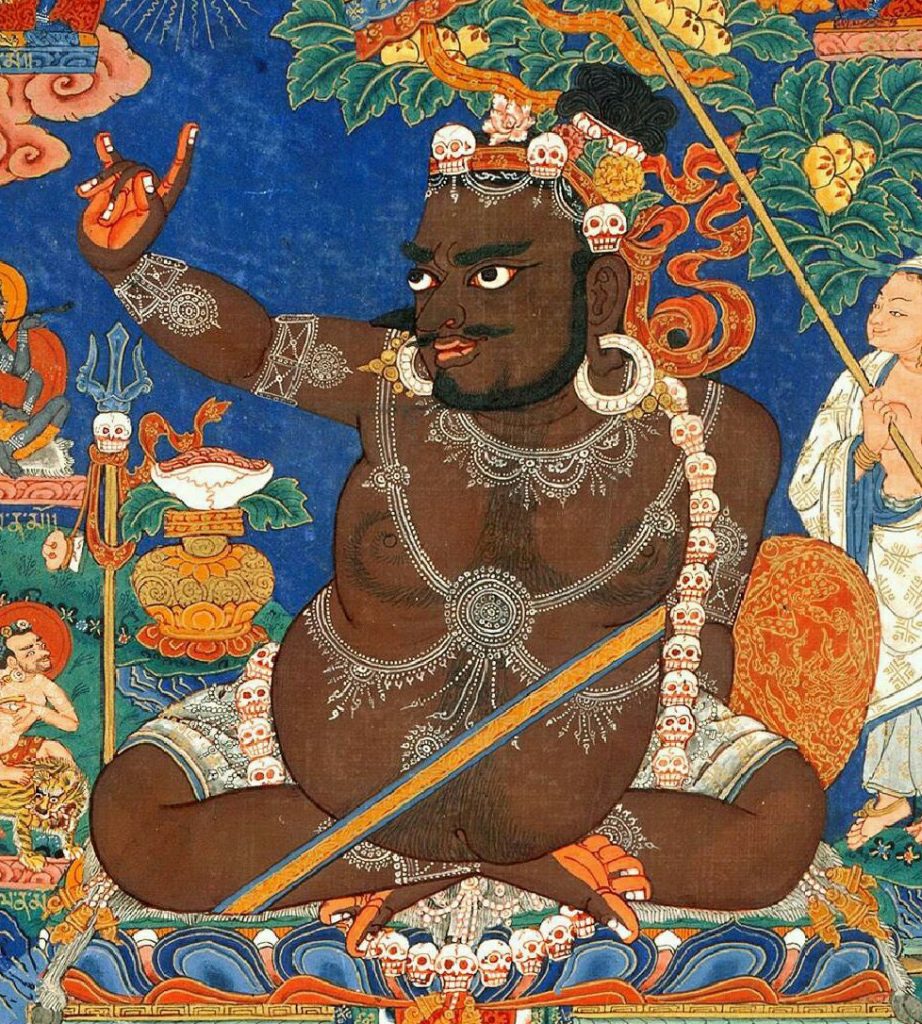Previous Lives
The Mystical Sun-Stopper
Mahasiddha Virupa
 Some time in the 7th Century CE, a boy was born to the royal family in the ancient Indian city of Vesasa. As was customary of the time, court astrologers were invited to predict the child’s future. It was thus declared that the boy, who was given the name Rupyachakra, would attain spiritual powers and proliferate the Buddha’s teachings. Decades later, this prediction was fulfilled when Rupyachakra became known as Virupa, one of the greatest mahasiddhas of our time.
Some time in the 7th Century CE, a boy was born to the royal family in the ancient Indian city of Vesasa. As was customary of the time, court astrologers were invited to predict the child’s future. It was thus declared that the boy, who was given the name Rupyachakra, would attain spiritual powers and proliferate the Buddha’s teachings. Decades later, this prediction was fulfilled when Rupyachakra became known as Virupa, one of the greatest mahasiddhas of our time.
But before all of that could happen, Rupyachakra first entered Somapura, a famed monastery in North Bengal where he was duly ordained by the abbots. He proved to be a gifted student, mastering all the five major Buddhist sciences and establishing himself as an unparalleled scholar of the Buddhist doctrine along with other religious and philosophical systems. During this time, he also built a temple and installed sacred Buddha images to amass vast amounts of merit and purify negative karma for his deceased parents.
Upon completing his studies at Somapura, Rupyachakra made his way to Nalanda, the world’s largest monastic seat, where he received full ordination. He became known as Shri Dharmapala and would eventually be appointed Nalanda’s abbot.
By day, the abbot Shri Dharmapala was busy teaching, composing texts and attending to the monastery’s administrative affairs; by night, he was a diligent practitioner of the Chakrasamvara Tantras. Despite years of practice however, the aging monk did not gain a single sign of spiritual accomplishment.
The final straw came when he was plagued by many intense, negative dreams. He immediately took them to be extremely grave omens and concluded that he did not have the karma to succeed on the Vajrayana path in this lifetime. That night, the disheartened Shri Dharmapala made the tough decision to give up his practice and threw his mala (rosary) in the latrine.
It was then that he had a vision of the goddess Nairatmya who explained that his nightmares were in fact signs that he was very close to attaining tantric realisations. Encouraged by her words and with immense remorse, he recovered his mala and resumed his practice, becoming enlightened soon after.
Shri Dharmapala’s stainless reputation as a pure monk was later called into question when monks saw what they thought were ordinary women entering his chambers. In reality, they were dakinis (female embodiments of enlightened energy) coming to partake of the tsog offerings that he engaged in as part of his tantric practice.
Rumours swirled that he had broken his vows by consorting with women. In the end, to quell those rumours, Shri Dharmapala stood before an image of the Buddha in the monastery and openly professed his sins. Removing his robes, he set down his begging bowl and proclaimed, “I am wicked” or “Ame Virupa”. This declaration was followed by a pattern of increasingly eccentric behaviour which resulted in his official expulsion from Nalanda.
The seemingly disgraced abbot, now known as Virupa, then roamed India as a dishevelled yogin. He performed countless miracles to subdue people’s minds, and many became his disciples and turned onto the Buddhist path. Of all the miracles he performed, the most famous was when he stopped the sun with a simple hand gesture. Virupa did that because he had promised to pay for the beer he drank at a tavern at sundown. Since the sun never set, he did not need to settle the bill! The sun remained in the sky for days. The unrelenting midday heat began to dry up crops across the land while rivers and lakes began to shrink. The citizens were exhausted but were unable to rest because of the terrible heat and sunshine.
Finally, the king and his ministers begged Virupa to release the sun. Virupa agreed only if the king would settle the tavern bill, which the king readily assented to. The sun was released at midday of the third day since Virupa entered the tavern. As the sun set that day, the entire kingdom rejoiced and developed deep faith in Virupa.
Virupa’s passing was as miraculous as the many deeds he performed throughout his life. Some say he turned into a stone statue, while others say he dissolved into a stone statue. Very few reliable sources of his life story have survived the passage of time. The tales that we know of today were passed down through oral tradition. Thus, there is a heavier emphasis on the miracles he performed, as they inspired deep faith in the people of that time.
